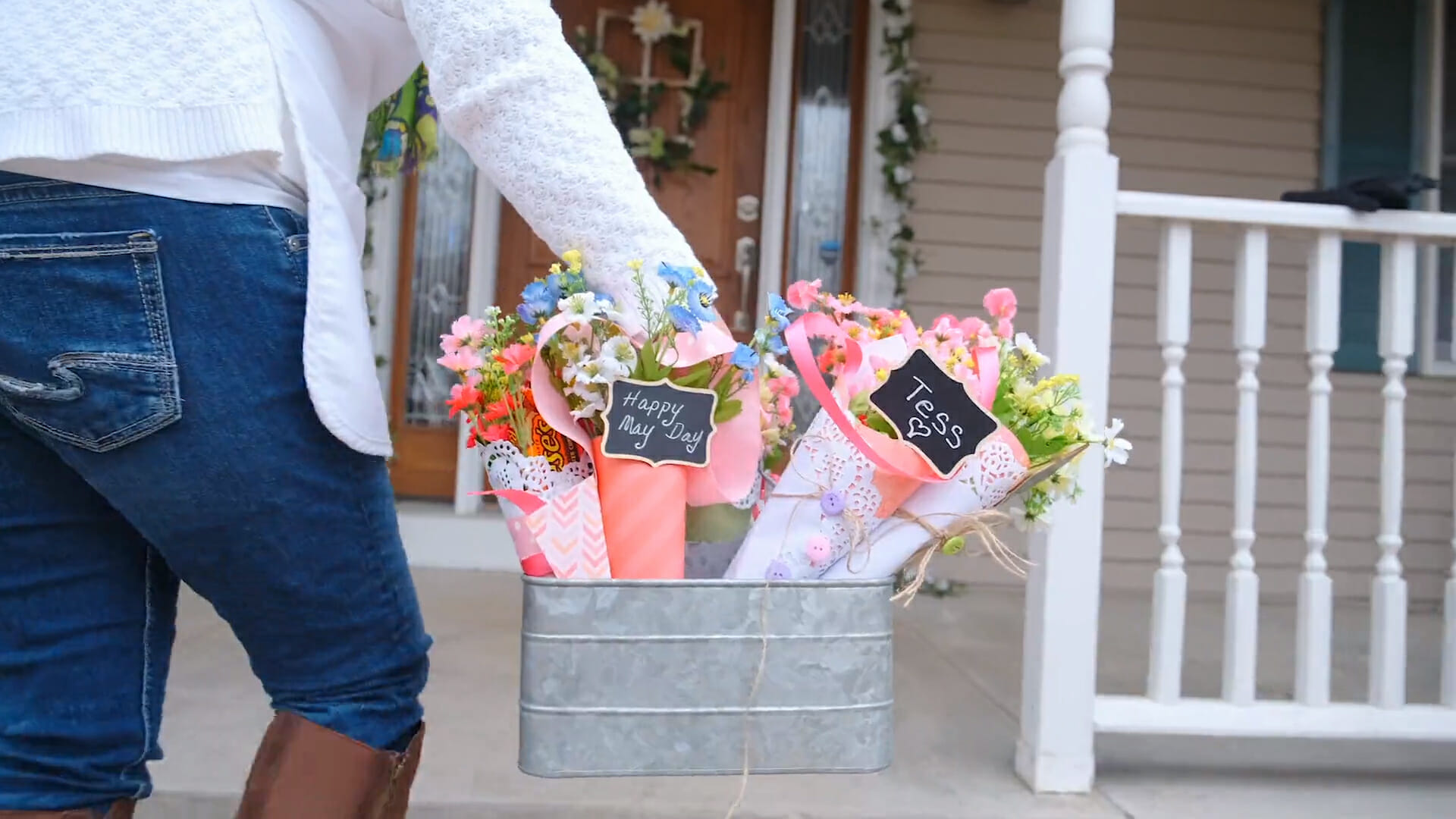Origins of May Day
Did you know that May Day has its roots in astronomy? Traditionally, it was the halfway point between the spring equinox and the summer solstice! In ancient times, this was one of the Celtic cross-quarter days, which mark the midway points between the (four) solstices and equinoxes of the year.
As with many early holidays, May Day was rooted in agriculture. Springtime festivities filled with song and dance celebrated the sown fields starting to sprout. Cattle were driven to pasture, special bonfires were lit, and doors of houses as well as livestock were decorated with yellow May flowers. In the Middle Ages, the Gaelic people celebrated the festival of Beltane. Beltane means “Day of Fire.” People created large bonfires and danced at night to celebrate.
May Day has a long history and tradition in England, some of which eventually came to America. Children would dance around the Maypole holding onto colorful ribbons. People would “bring in the May” by gathering wildflowers and green branches, weaving of floral hoops and hair garlands, and crowning a May king and queen. Such rites originally may have been intended to ensure fertility for crops and, by extension, for livestock and humans, but in most cases this significance was gradually lost, so that the practices survived largely as popular festivities.
The May Day traditions
The Maypole Dance
Do you know what a Maypole is? The Maypole is a pole that kids wrap with colorful ribbons and it is still a joyous tradition that exists in some schools and communities.
- Originally, the Maypole was a living tree chosen from the woods with much merrymaking. Ancient Celts danced around the tree, praying for good crops and fertility. For younger people, there was the possibility of courtship. If a young woman and man paired by sundown, their courtship continued so that the couple could get to know each other and, possibly, marry 6 weeks later on June’s Midsummer’s Day. This is how the “June wedding” became a tradition.
- In the Middle Ages, all villages had Maypoles. Towns would compete to see who had the tallest or best Maypole. Over time, this Old English festival incorporated dance performances, plays, and literature. People would crown a “May Queen” for the day’s festivities.

Making a May Basket
Ever heard of the May baskets? People would leave a paper basket or cone containing spring flowers and sweets on each other’s doorsteps, usually anonymously.
This tradition was popular through the 19th and 20th centuries, especially with children or sweethearts. The custom was to knock on the door, yell “May basket!” and then run. If the recipient caught the giver, he or she was entitled to a kiss.
To make a simple May basket, fold a piece of colored paper into the shape of a cone. Then fill with wildflowers! If you don’t have colored paper, roll up and secure (with tape or a staple) a paper plate. Draw on the plate with spring colors and fill with flowers!
You could also fill a real basket with little gifts such as flower seed packets, baked cookies, candies, and pretty trinkets. If you don’t have a basket, an empty milk carton or seed pot would also do the trick. Just cover in colored paper or pretty streamers and fill with tissue paper!
7 Ways to Celebrate May Day
Why not celebrate May Day? Here are some joyful May Day traditions marking the return of spring and the renewed gift of life.
- Among the many superstitions associated with May Day was the belief that washing the face with dew on the morning of May 1 would beautify the skin and bring good luck. We say go ahead! Walk outside and sprinkle your face with morning dew.
- On May 1, people in Britain welcome spring by “Bringing in the May,” or gathering cuttings of flowering trees for their homes.
- Make a May Day Basket of flowers!
- May 1 in Hawaii is called “Lei Day,” and people make pretty leis. Leis are garlands or wreaths that are often made with native Hawaiian flowers and leaves. These days, leis are given as a symbol of greeting, farewell, affection, celebration, or honor—all in the spirit of aloha. Make a lei or a garland for someone you love!
- Kids would go barefoot on May Day for the first time of the year. Whatever your age, walk barefoot in the morning dew.
- In parts of Ireland, people would make a May bush; typically this was a thorn bush or branch decorated with flowers and ribbons. Create your own May bush or tree! Just decorate with colored ribbons!
- Beekeepers traditionally moved bees on May 1. Want to get involved in beekeeping? Plants some bee friendly seeds!





